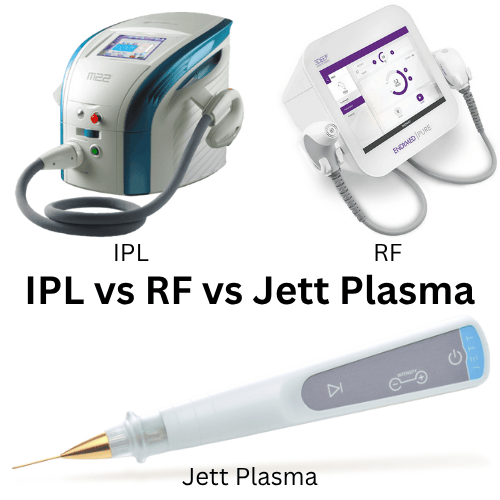UNDERSTANDING “EYE FLOATERS”: A COMPREHENSIVE GUIDE FOR CANADIANS
Have you ever noticed tiny specks or cobweb-like shapes drifting across your field of vision? These visual disturbances are known as “eye floaters”, and while most of the time they are harmless, floaters in eyes can sometimes cause concern and anxiety. In this comprehensive guide, we will delve into the world of eye floaters, exploring their causes, symptoms, treatment options, and when to see your optometrist. By understanding the nature of eye floaters, you can gain peace of mind and make informed decisions about your eye health.
What are Eye Floaters?
Eye floaters are small, dark spots or cobweb-like shapes that appear to float across your vision. They are caused by tiny bits of debris within your eyes that cast shadows on the retina—the light-sensitive tissue at the back of your eye. These floaters may vary in size, shape, and density, and can sometimes be more visible when looking at bright backgrounds or in well-lit settings.
Dr. Tom Wilk explaining “floaters”:
How common are they among different age groups?
In a recent study published in the International Journal of Ophthalmology, a significant 76% of participants reported experiencing vitreous floaters, highlighting the commonality of this condition across various age groups. Intriguingly, the prevalence of floaters was notably high in younger demographics, with 76.3% of individuals under 23 and 77.6% of those aged between 24 and 34 years reporting their presence. This trend slightly decreased in older participants, with 72.7% over the age of 34 experiencing floaters.
What Causes Eye Floaters?
Eye floaters occur due to changes in the jelly-like substance called the vitreous humor that fills the inside of our eyes. As we age, the vitreous humor tends to shrink and become more liquid, causing it to clump together. These clumps cast shadows on the retina, resulting in the appearance of floaters.
Other potential causes of eye floaters include:
1. Posterior Vitreous Detachment (PVD): PVD occurs when the vitreous humor shrinks and pulls away from the retina. This common age-related condition often causes an increase in floaters.
2. Eye Inflammation: Inflammatory conditions such as uveitis or serious internal eye infections can lead to the development of floaters.
3. Eye Injuries: Trauma to the eye, such as a blow or penetrating injury, can cause floaters to appear.
4. Retinal Tears or Detachment: In some cases, floaters may indicate a more serious condition, such as retinal tears or detachment. These conditions require immediate medical attention.
5. Congenital variants within the eye: Sometimes floaters are present from birth due to harmless opacities within the vitreous humor.
Symptoms and Diagnosis
Eye floaters are often harmless and do not require treatment. However, If you experience any of the following symptoms along with floaters, it is recommended to consult your MVO optometrist for a thorough evaluation.
Common Symptoms Associated With Eye Floaters
1. Sudden appearance or increased number of floaters: A sudden increase in the number of floaters or the development of new floaters could indicate a serious underlying condition.
2. Flashes of light: Brief, recurring flashes of light accompanying floaters could be a risk for a retinal tear or detachment.
3. Gradual vision loss: Floaters accompanied by a gradual loss of peripheral or central vision may indicate a more severe eye condition.
To diagnose the cause of eye floaters, your eye doctor will perform a comprehensive assessment which usually includes additional tests like a dilated eye exam to rule out any underlying issues.
Eye Floaters Treatment Options
Once a serious problem has been ruled out, floaters do not require treatment in most cases and tend to fade or become less bothersome over time. However, if floaters significantly impact your vision or quality of life, your doctor may discuss the following treatment options:
1. Vitrectomy: This surgical procedure involves the removal of the vitreous humor and its replacement with a clear fluid. While commonly performed for conditions such as diabetic retinopathy, macular hole and other eye diseases, it’s not commonly done when floaters are the only issue. This is because of the possible associated complications such as retinal detachment.
2. Laser Therapy: Laser treatment may be used in certain cases to break up large or dense floaters, making them less noticeable. This therapy is still considered experimental and as of the writing of this article, it is not yet considered the standard of care in Canada to manage floaters.
3. Lifestyle Modifications: Simple lifestyle changes, such as avoiding bright lights or managing stress levels can sometimes help reduce the perception of floaters.
When to Seek Medical Attention
Most eye floaters are harmless and do not require immediate medical attention. However, it is important to seek medical help if you notice any of the following signs:
1. Sudden appearance or increase in floaters: An abrupt change in the number of floaters or the appearance of new floaters merits a prompt evaluation.
2. Flashes of light: Recurring flashes of light or a sudden onset of flashes should be addressed promptly.
3. Loss of vision: Any sudden or gradual vision loss, with or without the appearance of floaters, requires urgent medical attention.
Key Points On Eye Floaters
Eye floaters are a common occurrence and while they are usually harmless, any changes need to be evaluated by your MVO optometrist. Understanding their causes, symptoms, and treatment options can help alleviate concerns and provide peace of mind. Remember, while most floaters do not require treatment, regular eye exams and optometrist consultations are essential to rule out any underlying conditions. If you have any concerns about your eye health, consult your MVO doctor of optometry who can provide you with an accurate diagnosis and appropriate advice. Stay informed, take care of your eyes, and enjoy clear vision for years to come.











